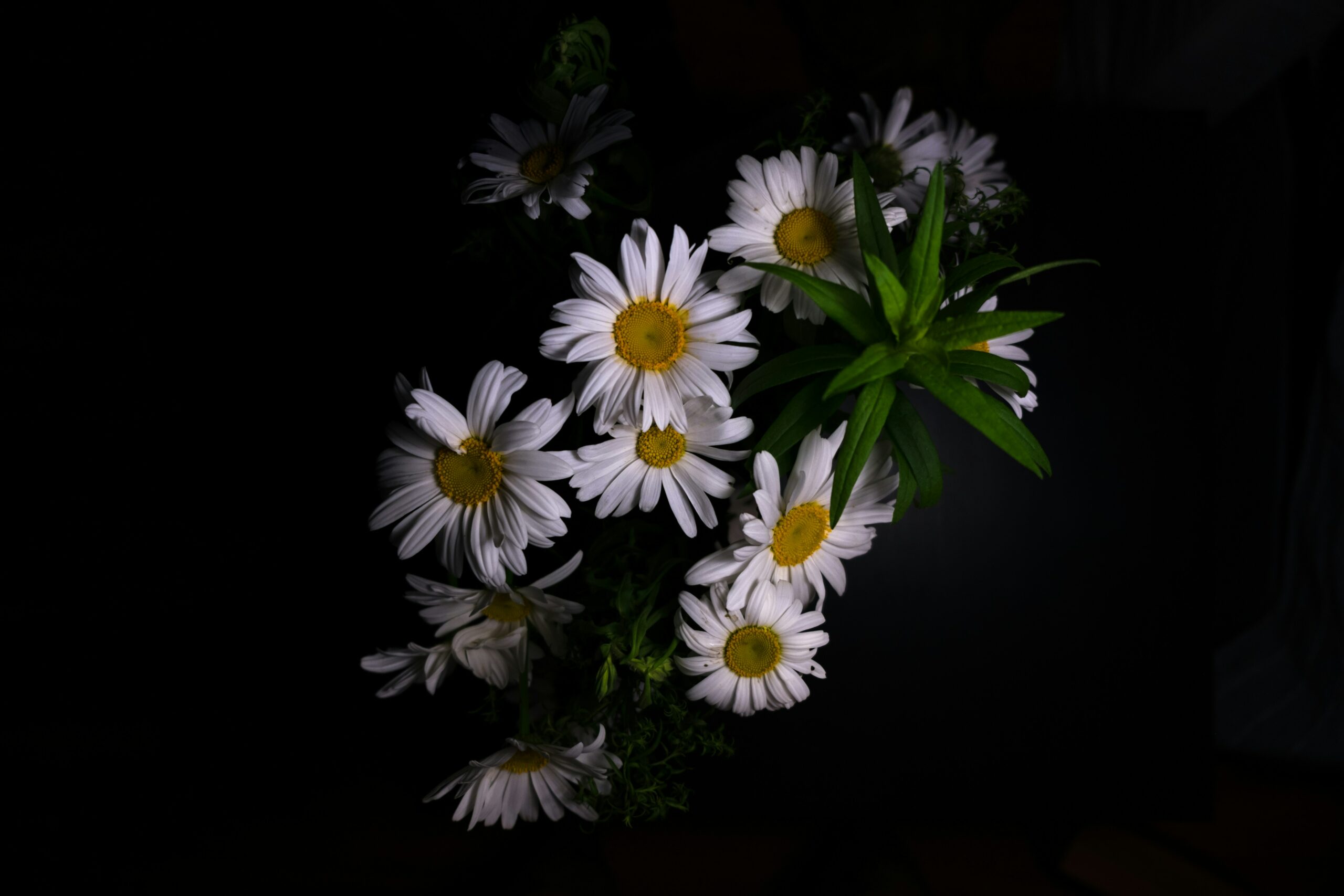Chamomile Benefits Explained: Chamomile Tea & More

Chamomile is not a high maintenance flower. It will grow anywhere; on the sidewalk, by your house, and through fields and fields of nothingness. Arguably, chamomile tea is a staple of any basic tea collection and is as easy to find as the flower itself. Incidentally, this simple flower is the answer to many ailments.
My family was always big tea drinkers. As a child, I used to very intentionally stay away from this tea. I knew this meant it was almost bedtime, and there was just far too much left to do in the day. Were my grandparents trying to sedate me with this natural soothing agent? Or did they know that the bundle of energy I was could only unwind with a little help? In any case, chamomile has always been a big part of my life.
At this point, as an adult, I now look forward to that last cup of tea before bed, letting the day fall off me as my body sinks into the comfort of chamomile.
What Is Chamomile? Where Does It Come From?

Wild chamomile.
The daisy-like flowering plant comes from the Asteraceae family of plants. Incidentally, this plant family also includes sunflowers, Echinacea, and marigold too. This herb is most famously known to be relaxing and calming. Looks like a weed, behaves like a hero.
There are two types of this so-called ‘weed’: German and Roman. There isn’t much difference between the two except that German hails from Eastern Europe and some of Asia; whereas Roman is a little pickier and stays in Central Europe and North America.
That’s where we trace our little sprouts, but they’ve been around for thousands of years. They’re useful for everything from herbal remedies to cosmetic aids. Many different cultures throughout the ages have revered chamomile. The ancient Egyptians worshiped it above all other herbs, and Greek physicians used it to treat fevers and menstrual issues long before Midol. It even ranks among the 9 sacred herbs in an ancient Anglo-Saxon manuscript.
Chamomile Tea Explained

Chamomile tea is wonderfully comforting and soothing.
Since we can find chamomile in virtually all backyards, it’s one of the easiest things to make from scratch! Making your own tea means, you’re at the wheel of the project from start to finish so that you can take pride in every cup. You’ll need:
One or two handfuls of fresh chamomile from literally anywhere you can find it
- Baking paper
- Paper bag or a clean piece of screen mesh
- A dry, well-ventilated location away from direct sunlight
- Or, a food dehydrator
- Sift through your buds carefully, looking for dirt and unwanted additions
- Thoroughly wash petals and buds. It’s your choice whether to separate the petals from the buds or not.
- Spread your chamomile flowers evenly, in a single layer, on clean paper or screen mesh. Some say that separating the petals allows it to dry faster, but full flowers make for a more beautiful result.
- Leave the blooms to dry in a cool, non-humid, well-ventilated location, away from direct sunlight.
If you are using a dehydrator, do not set it to the highest setting. Doing this will not quicken the process, only ruin your blooms. Use the lowest setting and be patient.
You can also use an oven. The oven should also go on the lowest setting with the door ajar slightly to allow for air flow. You can check your flowers at 15-minute intervals and flip them if necessary. It should take an hour or two with this method.
Dried chamomile can retain its flavor for up to a year. So store it in an airtight glass or metal container to ensure it keeps its beautiful aroma and freshness.
Chamomile Tea Benefits Breakdown

Chamomile tea can help to calm and relax you.
Related to all things calming, Chamomile doesn’t just ease your mind before bed though; it can soothe a whole range of digestive issues and muscle problems, even wounds. Many beauty salons serve chamomile tea to relax facial muscles and minimize stress. Pro tip: ditch the cucumber slices and put chamomile tea bags under the eyes. It’s a natural skin lightener, so say goodbye to dark circles.
The pain relief and medicinal properties include it being a mild sedative, anti-inflammatory, antispasmodic, and carminative. All these things together calm the system and even heal the membrane of the digestive tract. These healing qualities are what make it the number one herb for digestive issues. It can help relieve anything from slight irritation to IBS, to Crohn’s disease. The antispasmodic element is the compound known as spiro-ether. It’s strong properties relax tension and aches in the muscles, which makes it an incredible source of relief for menstrual pain. It also promotes a fast and restful night sleep.
Chamomile is anti-inflammatory, non-allergenic, anti-bacterial and contains calcium, magnesium, folate and Vitamin A. It is a mild muscle and neurological relaxant. This magic mixture means it’s effective in strengthening the immune system, reducing colic, reducing gas and blood sugar. It can also relieve diarrhea and help with constipation. Headaches, migraines and fevers, all respond to the calming properties of chamomile.
All of these remedies in one small flower are strong enough for adult use but natural and gentle enough to be used on children as well!
Chamomile Tea And Pregnancy Explained
Pregnancy is a wonderful time, but it can also be confusing since people will tell you what to eat, how to sleep and give you plenty of unsolicited advice. Following that, it is best to stay away from caffeinated teas during the early stages of pregnancy. I know it’s not exactly a cocktail, but teas like oolong, green tea, and black tea have a high caffeine content. Caffeine is great when you need a work appropriate pick me up- but not so much for the developing baby inside you.
On the other hand, herbal tea contains no caffeine, making it safe for your little one. For example, red raspberry leaf tea has been used for centuries to encourage fertility and relieve menstrual cramps. It is full of calcium and acts to nourish and tone the uterus.
However, the calming and anti-inflammatory effects of chamomile have been linked to premature labor, bleeding and, according to the University of Maryland Medical Centre, miscarriage. The same properties that make chamomile great for when you’re menstruating can have the adverse effect when you’re pregnant.
Though there isn’t enough scientific evidence to say that chamomile necessarily harms your pregnancy and it is considered generally safe by the US food association, as with anything medical you are unsure about it is best to consult your doctor.
Chamomile Tea For Babies Explained

Chamomile benefits for babies.
Conversely, babies – just like the rest of us – really benefit from chamomile. Babies from as young as six months can begin traditional medicines. But before you turn to the chemical, chamomile soothes and heals many baby related problems. You can relieve a baby’s rash with some tea on a cotton ball. It’s an excellent natural remedy for prickly heat in babies since it quickly cools them, while providing itch relief. Ingesting chamomile tea can also help with allergies and inflammations.
A large number of things can keep baby awake with pain. That feeling of not being able to settle a crying baby can leave anyone in tears themselves. With chamomile tea, you have a natural remedy that is gentle and effective enough to cure a large amount of baby-related ailments. This means that not only does chamomile help ensure your little one has a good night’s sleep, so too with you.
If you find that your child develops a rash, that’s ok. It means that chamomile is not for your bub and you should stop using it. Be sure to let your pediatrician know. If you’re a ‘forum mom’, you may see some postings of babies being given chamomile from as little as six weeks. Be careful, and always consult your pediatrician on dosage, stage, and age!
When preparing the tea for your bub, be sure that it’s natural and pure. Some manufacturers mix their chamomile with other teas which gives them a caffeine boost. Be sure to check the ingredients or simply make your own from fresh chamomile.
Your baby can drink it straight from the bottle or, if they are teething, they can suck on a rag drenched in the tea, but never give your child more than 3oz of chamomile tea a day.
How To Grow Chamomile At Home
Chamomile is a very easy plant to grow, as you can see driving down any street. But if you don’t have chamomile by your home, no worries, that’s an easy problem to fix!
This flower loves cool conditions, and dry soil so all you need to do is find a spot where the sun comes out to play and where there’s a breeze. Chamomile is super low maintenance and requires very little care. Just pure water, and not too much fertilizer at all. This perennial is known as a companion plant. Therefore, it can be grown next to other plants and will keep the bugs away thanks to its strong smell. We love it, and they hate it. It’s a win-win.
Conclusion
As you can see, chamomile has many benefits for your skin and senses. Whether you are looking for a way to settle your mind before sleep, or you’re in the throes of excruciating pain, chamomile is there for you. Finally, when your baby can’t sleep because he or she is teething, or you can’t sleep because your baby is teething, chamomile is there for you. So go and plant some today, and start reaping the rewards of a calmer, more natural, you!



